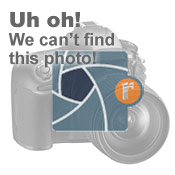Zeiss Contax IIIa CD Rangefinders
Zeiss Contax IIIa CD Rangefinders
USER REVIEWS
|
[Jul 19, 2000]
CGC
Model Reviewed:
Contax IIIa CD
Strength:
Extremely accurate focus & quiet shutter. Very good build quality (although 1950s-era quality control wasn't as good as today's) & nice design (surprisingly small compared to my new G2). Wonderful lenses that hold up well even today.
Weakness:
What you would expect from 50 year-old technology. Not easy to find qualified repair personnel nowadays. One of the great classic all-mechanical rangefinders & a much better value than comparable Leicas (it's too bad Zeiss Ikon didn't stay in the game). I actually have a "black dial" (non-PC-sync) IIA. For more info, see Stephen Gandy's web site @ . Customer Service N/A. Similar Products Used: Leica M3. |
|
[Jan 05, 2000]
John Lind
Professional
Model Reviewed:
Contax IIIa CD
Strength:
* Legendary Carl Zeiss Lenses
Weakness:
* Small Viewfinder by Current Standards The Contax IIa and IIIa CD (color dial) is a legendary, professional grade, 35mm rangefinder system made from 1954 through 1961. The difference between a IIa and IIIa is the IIIa's integral Selenium light meter. Using Carl Zeiss lenses that are still among the finest ever made, this is a system technologically ahead of its time and its contemporary competition: Customer Service * Factory service no longer available Similar Products Used: * Argus C-3 |
|
[Oct 12, 2000]
Slawomir Prokop
Intermediate
Strength:
This camera is in my family since 1958. It's use to differend kind of photos. many of my photos I've taken on cars rallys. Super speed of shutter (remember it's quite old camera) makes possible to take a cars photo which is on full speed and you can still read a ruber size :)
Weakness:
After over 40 years of use: You can hold in yours hand a huge piece of history. Customer Service 42 years without ANY repairs! Similar Products Used: Praktica (made in DDR) |
|
[Nov 16, 2000]
R.D. Kenwood
Intermediate
Strength:
Zeiss glass, Zeiss glass, Zeiss glass. The 50/2 Sonnar is magnificent. If you're shopping lenses, look for the West German stuff; I understand the East German (marked Carl Zeiss Jena) lenses are quite good too. I also have a Nippon Kogaku 35/2.5 which I haven't shot enough with to render an opinion.
Weakness:
I frequently wish it had a rapid wind lever instead of the knob. With the Contax IIa/IIIa (I have the IIa, which lacks a meter and is therefore less bulky and more-popular than the IIIa now that most IIIa meters are going bad), you hold in your hands a work of art that challenges your vision to equal it in your photography. It doesn't have "weaknesses," it has character; it's not just a tool, it's inspiration itself. Customer Service For a vintage camera? Similar Products Used: None, although I've used a ton of SLRs, mostly Nikons. |
|
[Jul 18, 2001]
Bengt Bjorkbom
Expert
Strength:
The quality, the feeling, and the
Weakness:
A little bit slow to use maybe, On a hiking-tour in the Swedish Montain last month I use a IIIa with a Customer Service No problems, I'am lucky, one of my friends is an expert to repair early Contax RF. Similar Products Used: Contax II, III, IIa, IIIa, Kiev II, III, |
|
[Aug 06, 2001]
Thomas Viland
Expert
Strength:
Great optics (& fast)!
Weakness:
I've had the shutter repaired twice. Not many repair shops have spare parts, or will work on these oldies. My father gave me his Contax outfit a few years ago. He bought it used in 1945 in Los Angeles for $500.00. I've got a whole camera bag full of accessories to go with the IIIa body, including a wonderful set of Zeiss close-up lenses with finders. Who says you can't shoot macro with a rangefinder?! Customer Service I wish Similar Products Used: No other experience with a classic rangefinder. |



